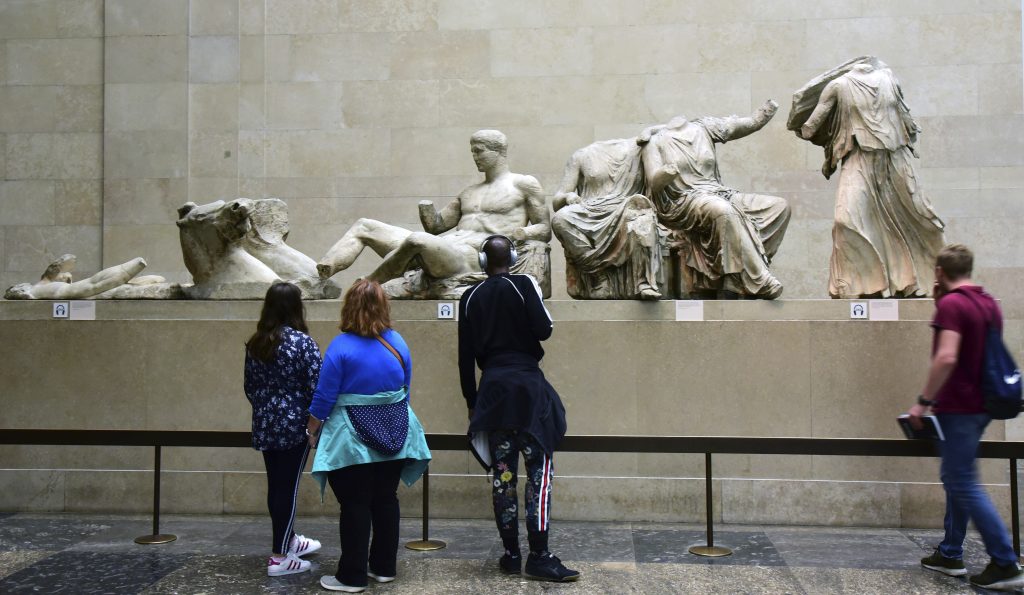Introduction
The Parthenon Marbles, the sculptured masterpieces from the Athenian Parthenon Temple, have a vibrant history that has been revealed through a ground-breaking study that was published in the journal Antiquity. These historic objects, which are currently housed in the British Museum in London, have sparked a divisive discussion regarding their proper ownership and restitution. According to the most recent research, these ancient relics formerly bore elaborate patterns and a rainbow of vibrant colours.
The Parthenon Marbles: A Glimpse into Ancient Greece
The Parthenon Marbles, created more than 2,500 years ago by the ancient Greeks, were originally designed to adorn the steps of the Athenian Parthenon Temple. These fragments have endured centuries and are now the subject of international debate due to their location in the British Museum.
Uncovering Hidden Hues
What sets this study apart is its revelation that beneath the seemingly unadorned surfaces of these statues lies a world of colour. Deities and mythical creatures depicted in the Parthenon Marbles once boasted a vibrant palette, including bright Egyptian blue, white, and purple hues. Each colour had significance, representing elements like the water from which these figures emerged, the snakeskin of a sea serpent, the background spaces between the characters, and the figurative patterns adorning the gods’ robes.
Challenging an Age-Old Misconception
For centuries, the prevailing notion was that Greek and Roman sculptures were devoid of color or featured muted hues. This misconception arose from centuries of observing weathered stone and clay that had lost their original paint due to decay and cleaning efforts. The Parthenon Marbles, too, were not prepared in a way that would facilitate paint adherence to the stone’s surface, leading to the removal of paint traces in previous restorations.
A Closer Look through Luminescent Imaging
To unravel this colourful history, archaeologists employed luminescent imaging techniques, which revealed hidden chemical elements from traces of paint on the sculptures’ surfaces. The research team uncovered evidence of concealed patterns, such as intricate floral designs and figurative depictions, created using a mix of four pigments.
The Colours of Antiquity
The Egyptians crafted the brilliant blue hue, a pigment frequently used by the ancient Greeks and Romans. The purple tint was derived from ingredients previously unknown to researchers, adding an intriguing layer to the Parthenon Marbles’ history. Two types of white paint were found—one created from gypsum and the other from a bone-white pigment made using bone ash.
Reassessing Ancient Aesthetics
The researchers disputed the common perception of these sculptures as monochromatic, claiming that the colour was “as visually important as the carving.” The Parthenon may have once been a far more vibrantly coloured and visually arresting masterpiece than previously believed in light of this new evidence.
The discovery of concealed colours on the Parthenon Marbles contradicts preconceived notions about how Greek and Roman statues appear while providing new insight into ancient aesthetics. It adds yet another angle to the ongoing discussion of who should have ownership of and responsibility for maintaining these great artefacts from antiquity.
Feature Image: Visitors stand in front of Parthenon sculptures at London’s British Museum.WALTRAUD GRUBITZSCH/PICTURE-ALLIANCE/DPA/AP IMAGES
Paintings of Monkeys Disclose the Indo-Greek Connections in Indus Valley Periods

Contributor





